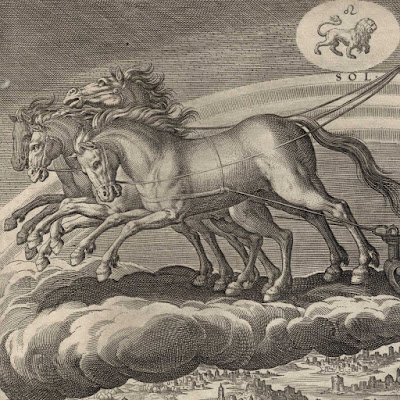Étienne
Delaune (aka Stephanus) (c1518–83) Note: Delaune signed his prints
“Stephanus” or “S. Goldsmith”, hence the initials “S.F.” inscribed in this
plate at lower right.
“November” (“Novembre”), 1568, plate 11 from the series of twelve
plates, “The Labours of the Months.” The British Museum offers the following
description of this series: “A complete set of twelve small scenes depicting a
seasonal activity associated with a zodiacal sign; within oval, without frame.”
(http://www.britishmuseum.org/research/collection_online/collection_object_details.aspx?objectId=1418591&partId=1&searchText=months&people=127338&page=1)
Engraving on fine laid paper.
Size: (sheet) 5.7 x 8 cm; (oval borderline) 5.5 x 7.7 cm
Inscribed within the oval borderline at lower right: “S.F.”
Lettered below the oval borderline: (left) “NOVEMBRE.”; (right) “CVM
PRI. REGIS.”
Robert-Dumesnil 1835-71 IX.58.195 (A P F Robert-Dumesnil 1835, “Le
Peintre-Graveur Français”, 11 vols.); IFF 198
See the description of this print (with very limited information)
at the Rijksmuseum (http://hdl.handle.net/10934/RM0001.COLLECT.103046)
and Harvard Art Museums (http://www.harvardartmuseums.org/collections/object/142201?person=35170).
For more information about prints by Delaune see: http://spaightwoodgalleries.com/Pages/Delaune.html
and http://www.vam.ac.uk/blog/engraved-ornament-project/life-and-work-etienne-delaune-1
Condition: well-printed crisp impression trimmed along (or
slightly within) the platemark and lined onto a conservator’s support sheet of
washi paper. The sheet is in excellent condition apart from minor toning to the upper-right corner.
I am selling this small and finely executed print executed in 1568
for the total cost of
If you are interested in purchasing this small masterpiece showcasing
rural life occurring in November in the 16th century, please contact
me (oz_jim@printsandprinciples.com) and I will send you a PayPal invoice to
make the payment easy.
Many viewers of this print would have no difficulty in recognising
the seasonal activities associated with November portrayed here, but sadly, my understanding of 16th
century European rural life occurring during this month is far from my experiences of living in tropical Australia.
Nevertheless, I assume that the central figure is a swine herdsman whose
activity of belting a tree with a rod is presumably to harvest/dislodge fruit
or nuts, while the woman shown in the distance cuts what I assume may be
sheaves of straw.
What I find particularly curious about this print is the zodiac symbol
of Sagittarius—one of the astrological signs for November—shown in the clouds at the
top of the composition, as the satyr of Sagittarius seems to be pointing his
bow and arrow at the woman cutting the straw below. To be honest, I really do not
know the significance of the satyr’s bow being aimed at this lady. Certainly, I
am not aware of the Sagittarius satyr ever performing the role of a cupid in
shooting arrows of love.
Perhaps I am reading far too much into this composition and what
Delune is really showing the viewer is simply an emblem image of November
activities without deep allegorical meaning.























































